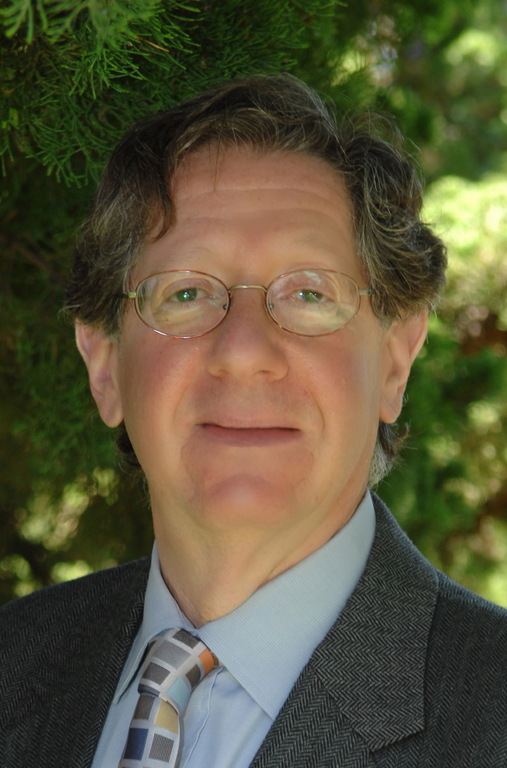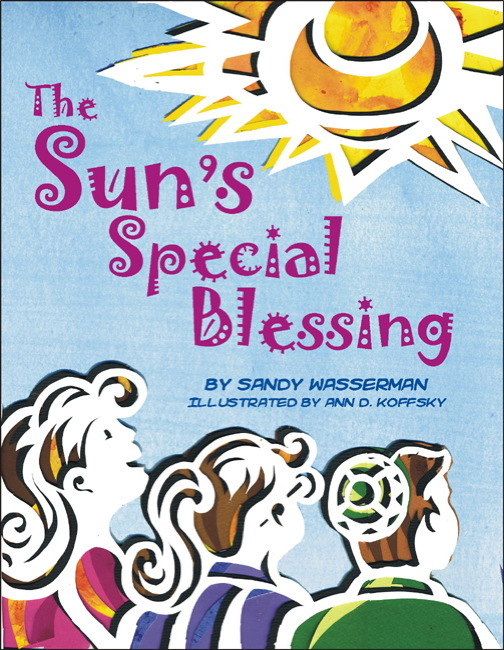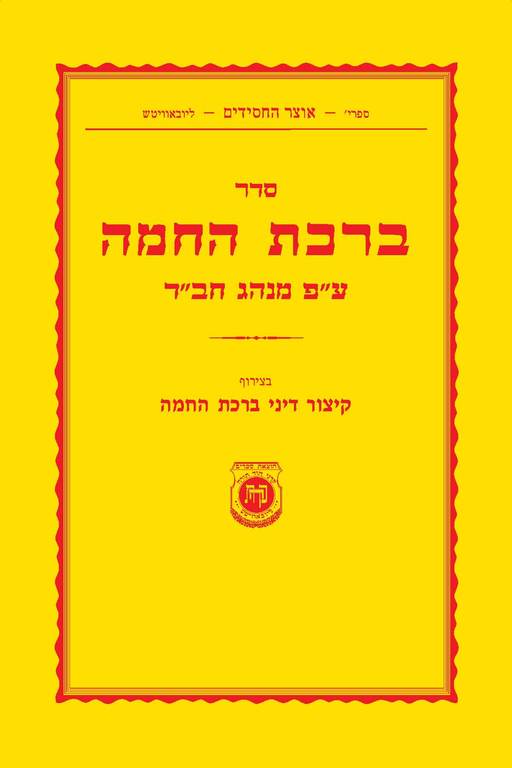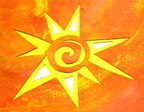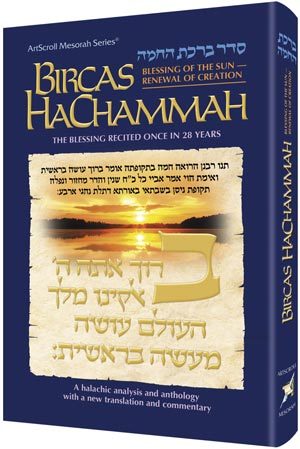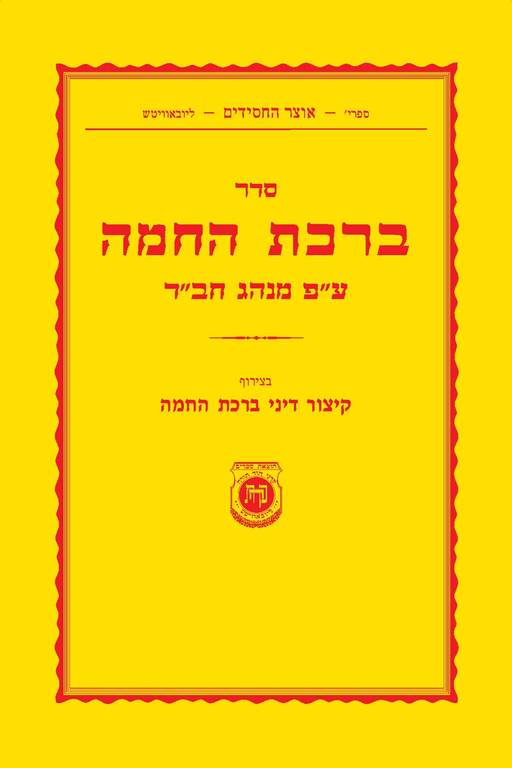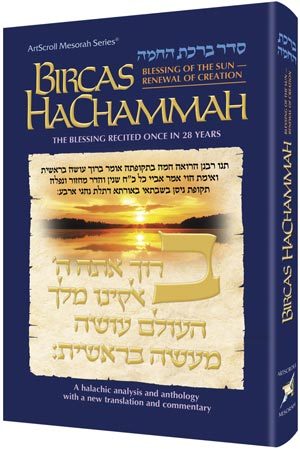The Kosher Bookworm: Watch out! Here comes the sun
A timely review of an untimely event, Bircat HaChama
Issue of April 3, 2009 / 9 Nissan 5769
Our rabbis are sermonizing about an event that’s soon to happen, an event that is celebrated once every 28 years. This event is the blessing of the sun, to mark its place in the heavens as it was on the day of its creation.
The blessing reminds us of G-d’s role in the creation of this world and serves as a reminder of our primary belief in G-d, which serves as the base for all that our faith stands for.
One irony in this year’s calendar placement of Bircat HaChama is that the last time it coincided with Erev Pesach was in 1925. I was recently reminded by Rabbi Martin Samuel Cohen of Shelter Rock, that the spring of 1925 was the lead-up to the famous Scopes Trial, a trial that was the first major judicial and educational clash between believers in evolution and creationism. Ironically, it was this same Rabbi Cohen, who, three years ago, finished editing the only siddur that I know of, Tzur Yisrael, that features a liturgy of Bircat HaChama as a permanent fixture.
In setting out to pen this essay, I soon realized that this was not going to be an ordinary review. Rather, I will first outline some previously published and re-published works dealing with the subject, and then focus on one particular liturgical work that is recited in all services dealing with Bircat HaChama that resonates in our daily and festival services, namely Psalm 19.
First, a journey down memory lane.
In 1981, a relatively new publishing company, Artscroll, published a thin hardcover book entitled “Bircas HaChama” by one of Yeshiva University’s most distinguished scholars, Rabbi Dr. J. David Bleich. This book, due in no small part to the reputation of its author, became an overnight bestseller. Rabbi Bleich’s vast knowledge in both the religious and secular realms served both him and us in good stead.
At the same time, here on the South Shore, a leading rav and poseik, Rabbi Avrohom Blumenkrantz, of blessed memory, composed a 27-page guide entitled “Yiroucho Im Shomesh,” a halachic exposition on the solar cycle that also includes 11 short steps to construct a Jewish calendar. This brought home to the Yeshiva world, in clear language, the practical aspects of this mitzvah.
Also at this same time, in Everett, MA, Rabbi Dr. Nehemia Polen, a young musmach from Ner Yisrael and noted biographer of the Aish Kodesh, the Piasezna Rebbe, Hy”d, together with his wife, artist Lauri Wolff-Polen wrote their version [nusach] entitled “A Blessing For The Sun: a study of the Birkat Hachamah from early times to the present.” It was this later volume that gained traction outside our community and served as a prime resource to the Jewish community at large.
Each of these three works, successful in their initial printings 28 years ago has been updated and reprinted this year to public acclaim. This is indeed a unique event in Jewish publishing history.
Other versions of the ritual for Bircat HaChama with English translation are the two volumes published by the Kehot Publication Society, based upon Chabad custom with the nusach as directed by the previous rebbe, Rav Menachem Mendel Schneerson, of blessed memory, in 1981. This version is the only Chassidic-based liturgy that has appeared, to date, with an English translation.
Targum Press has issued a very popular guidebook and short commentary titled “Once in 28 Years” that deserves your attention. It deals with every main prayer, detailing in simple yet clear language the importance of the ritual as well as the historic and religious significance of this occasion. The prayers themselves are contained on a separate laminated card that accompanies this book.
An interesting book directed at children is titled, “The Sun’s Special Blessing” and is published by Pitspopany Press. This book is meant to introduce our little ones to the uniqueness of Bircat HaChama in a manner that would arouse their curiosity and enable them to assimilate the spiritual message of the centrality of G-d’s role in their world, using objects and concepts that are familiar to their everyday lives.
The author, Sandy Wasserman, lives in Plainview and was a long time teacher before she retired. She notes that she was always interested in the sun and moon, and the experiences told in this story book were based on her class’s activities in 1981.
The illustrator, Ann Koffsky, is a resident of West Hempstead, and is a veteran illustrator, having worked on over 20 children’s books. This particular book’s illustrations were created by layering paper-cuts over painted backgrounds, with a most effective result.
As noted, the review part of this essay will focus on a survey of various commentaries dealing with Psalm 19 which is at the heart of the tefilot recited for Bircat HaChama.
Why this specific psalm was chosen is easily seen through the themes that run through this complicated composition. It is particularly appropriate to celebrate the world’s creation since it begins with reference to the entire world as G-d’s creation.
According to many commentators, this psalm is written in three parts: The first is devoted to the sun. The second is a song praising the Torah. The third represents a personal tefillah (prayer) asking for understanding and ultimately acceptance of this prayer.
Others see the first two as intertwined thematically, thus linking the creation of the sun and the Torah’s teachings into one theme. Thus, according to Dr. Nahum Sarna in his book, “On the Book of Psalms,” (Schocken, 1993), one gives physical light to the world while the other, the Torah, offers G-d’s justice and wisdom to all humanity, world-wide. In effect, when taken together they both represent the totality of G-d’s rulership of his world.
Others, including Sarna, view Psalm 19 as part of Judaism’s fight again the pagan worship of the sun as well as other pagan related practices involving astronomy. The praises of the sun that we have here in this psalm all point to the fact that the sun is a creation of G-d and is appointed to perform the Divine will at all times. The sun is neither the source of law nor justice as taught in other faiths.
Thus, the recitation of this psalm at this time, and on every Jewish festival and Shabbat, serves to help us better appreciate both the physical and spiritual world.
We must always remember that without the sun there would be no life, for this is at G-d’s will and direction, not the independent decision of the sun itself. Without our observance of our faith according to Torah and mitzvot, our very lives would be as shallow and cold as if there were no sun.
Another irony to this psalm is its last verse: “May the words of my mouth and the meditations of my heart be acceptable to you, my Rock and my Redeemer.”
This one sentence is the most frequently recited verse of Tehillim in all Jewish liturgy. We recite it after every silent Amidah service, in Pesukei D’zimra for every Shabbat and holiday. We also recite it before every recitation of Shema Koleinu at every Selichos service and on every fast day. It is perhaps the most heartfelt plea that we can make to G-d, asking him to listen to us and to accept what we pray for; in effect, this is a prayer for our prayers! Imagine, even our Tefillot need Tefillot!
To me, this symbolizes the essence of what not only Bircat HaChama represents but what constitutes the very efficacy of our prayers. This one line should serve to chasten us to heed the content and deeper meaning of our prayers, to appreciate their meaning, structure and cadence. We pray for ourselves, for our world, G-d’s creation and for the prayers themselves. Taken together, this is what Jewish worship and belief is all about. All the rest is commentary.
In conclusion, may I suggest that further study on this Psalm 19 can be found in the writings and commentaries by Rabbis S. R. Hirsch, B.S. Jacobson, Eli Munk all of blessed memory and Rav Yitzchok Sender’s siddur commentaries., and in Daat Mikrah, Psalms Commentary as published in English by Mosad Harav Kook.
Whether it is during the Bircat HaChama service or over Yom Tov itself, slow down a bit when you come to this Tehillim 19 and ponder its words with greater kavana (devotion).
Chag Kasher V’Sameach to you, my dear readers and your families.

 47.0°,
Overcast
47.0°,
Overcast 